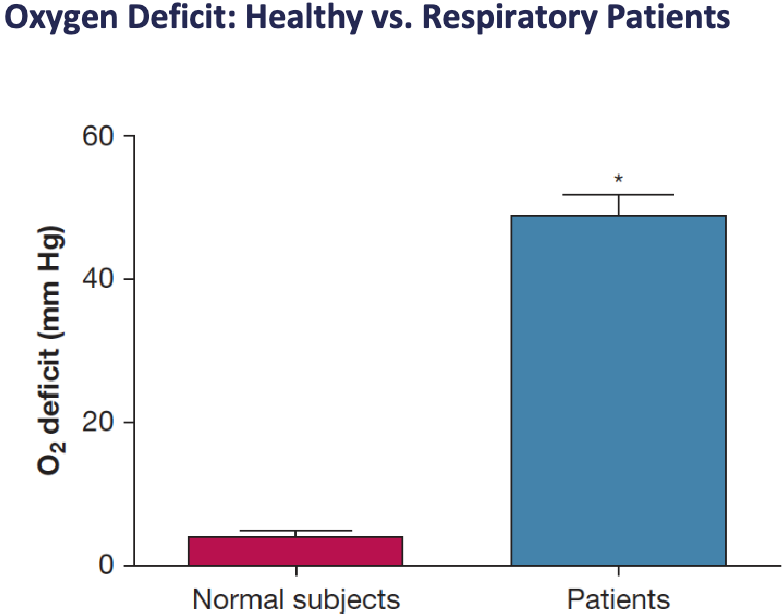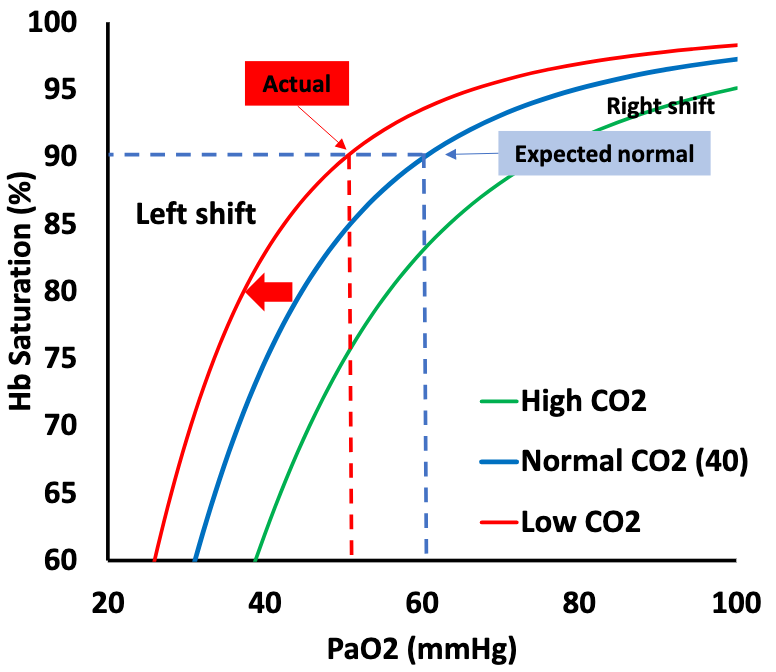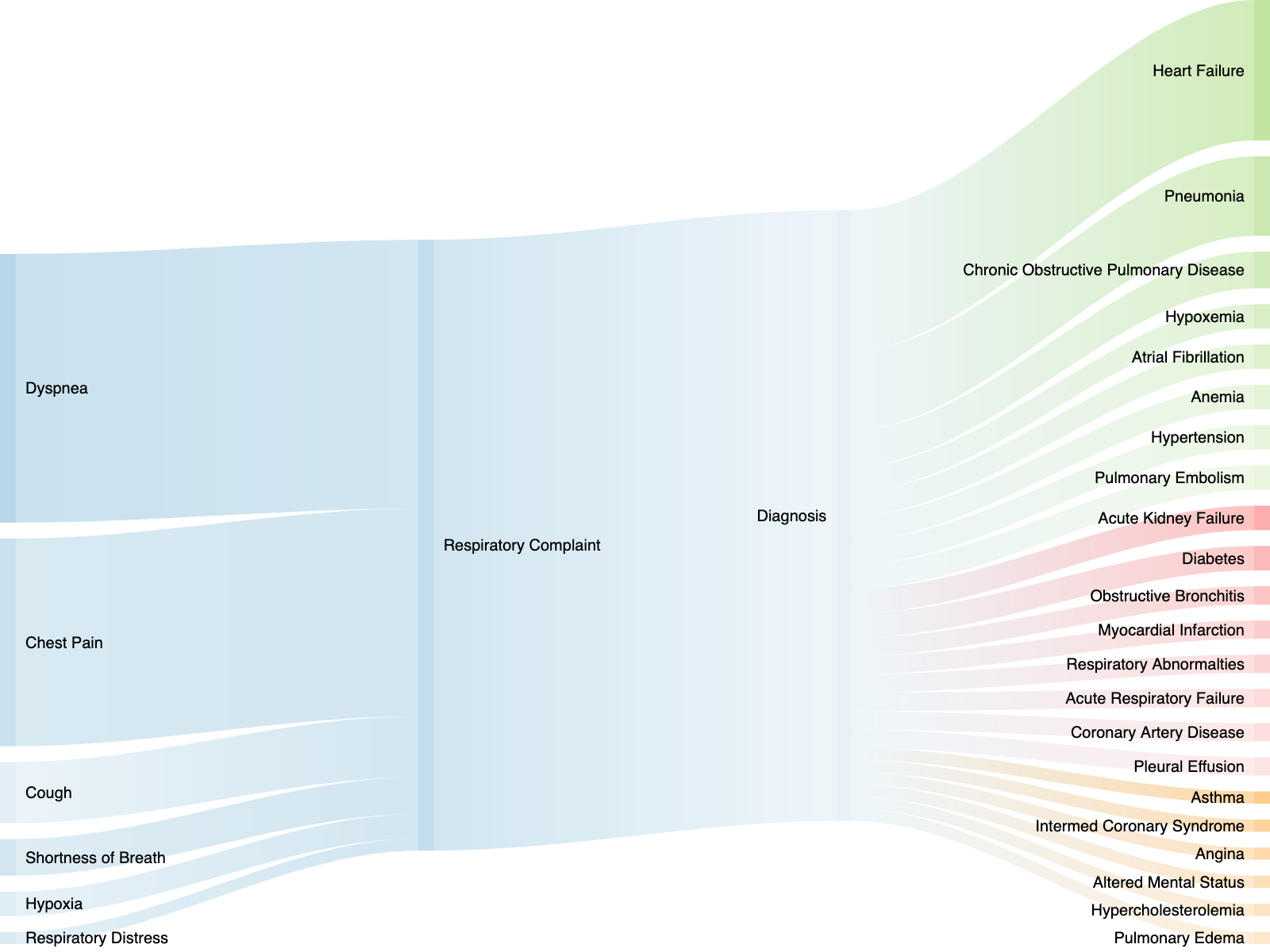Because of the logistical barriers, use of the A-a gradient has declined in favor of other less precise, but more accessible indices of oxygenation and pulmonary gas exchange. The barrier to this important clinical information has finally been removed with the validation of the Oxygen Deficit, a new non-invasive approach to a traditionally unpleasant and logistically complicated procedure.

Pulmonary embolism (PE) is a type of venous thromboembolism (VTE) in which a clot or other obstruction breaks off and moves to the pulmonary vasculature and results in reduced pulmonary gas exchange.
There is no question that stand-alone pulse oximetry has become a standard in modern healthcare. It is as ubiquitous as the stethoscope, and as heavily relied upon as the electrocardiogram. That makes it all the more concerning that suddenly, in the midst of the largest respiratory crisis the world has ever faced, healthcare providers are wondering if this long-held lynchpin of healthcare monitoring is leading them astray.


Patients in respiratory distress require immediate medical attention. The ability to quickly identify hypoxemia and its cause is crucial for positive patient outcomes. However, there is a gap in the current cardiorespiratory assessment toolkit that leaves clinicians unable to quickly identify the cause and severity of hypoxemia.
Go West: translational physiology for noninvasive measurement of pulmonary gas exchange in patients with hypoxemic lung disease. Pickerodt P.A., & Kuebler W.M. American Journal of Physiology, Lung Cellular and Molecular Physiology. 2019 Mar 6;316: L701–L702. https://www.ncbi.nlm.nih.gov/pubmed/30838868
A New, Noninvasive Method of Measuring Impaired Pulmonary Gas Exchange in Lung Disease: An Outpatient Study. West J.B., Crouch D.R., Fine J.M., Makadia D., Wang D.L., Prisk G.K. CHEST. 2018;154(2), pp. 363-369. https://www.ncbi.nlm.nih.gov/pubmed/29452100
Measurements of pulmonary gas exchange efficiency using expired gas and oximetry: results in normal subjects. West, J.B., Wang, D.L., Prisk D.K. American Journal of Physiology-Lung Cellular Molecular Physiology. 2018 Apr 1;314(4): L686-L689. https://www.ncbi.nlm.nih.gov/pubmed/29351442
Noninvasive measurement of pulmonary gas exchange: comparison with data from arterial blood gases. West, J. B., Wang, D. L., Prisk, G. K., Fine, J. M., Bellinghausen, A., Light, M. P., & Crouch, D. R. American Journal of Physiology-Lung Cellular and Molecular Physiology. 2018. https://www.ncbi.nlm.nih.gov/pubmed/30335497
A lifetime of pulmonary gas exchange. West, J.B. Physiological Reports. 2018 Oct;6(20):e13903. https://www.ncbi.nlm.nih.gov/pmc/articles/PMC6198137/
Measuring the efficiency of pulmonary gas exchange using expired gas instead of arterial blood: comparing the “ideal” Po2 of Riley with end-tidal Po2. West JB, Liu MA, Stark PC, Prisk GK. American Journal of Physiology-Lung Cellular and Molecular Physiology 2020;319(2):L289-L293. https://journals.physiology.org/doi/full/10.1152/ajplung.00150.2020
Validation of a Non-invasive Assessment of Pulmonary Gas Exchange During Exercise in Hypoxia. Ainslie, Philip N., Howe, Connor A., MacLeod, David B., Wainman, Liisa, Oliver, Samuel J., CHEST. 2020 Apr. https://www.ncbi.nlm.nih.gov/pubmed/32343965
John B. West, et al.
This new, noninvasive method of measuring impaired gas exchange in patients with lung disease is very sensitive to the presence of disease and may discard the need for arterial punctures in many instances.
Philip N. Ainslie, et al.
This study found that pulmonary gas exchange efficiency measured using a non-invasive gas exchange monitor provided a valid and reliable measure against directly measured arterial blood gasses at rest and during hypoxic exercise.
Download Summary
John B. West, et al.
The oxygen deficit (a surrogate for the alveolar-to-arterial oxygen difference) as calculated by the alveolar gas meter provides a useful tool for clinical triage.
This study demonstrated patients with Pulmonary Vascular Disease demonstrate a significantly elevated Oxygen Deficit and demonstrated the feasibility of testing this device in both a clinic and acute hospital setting.